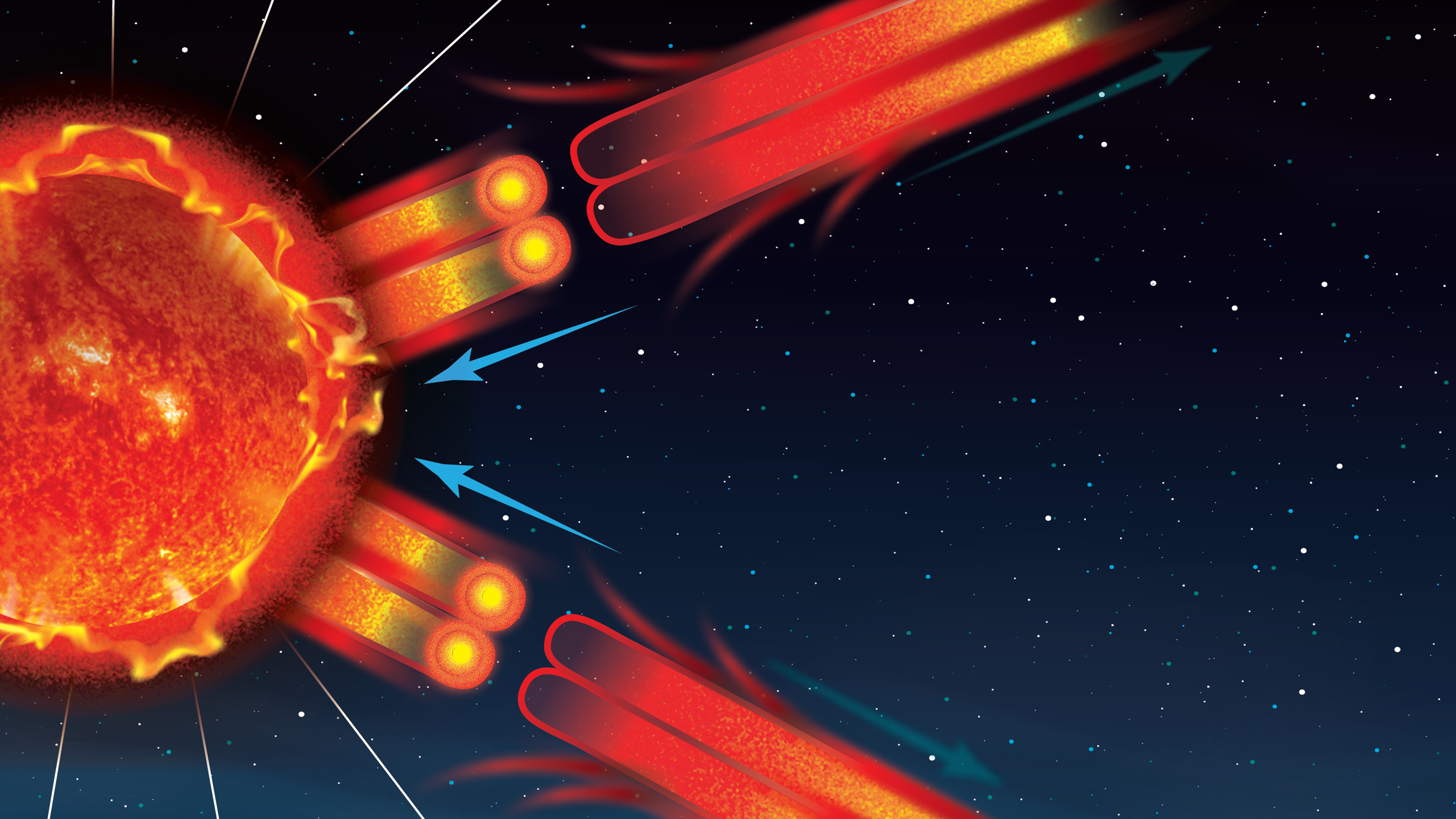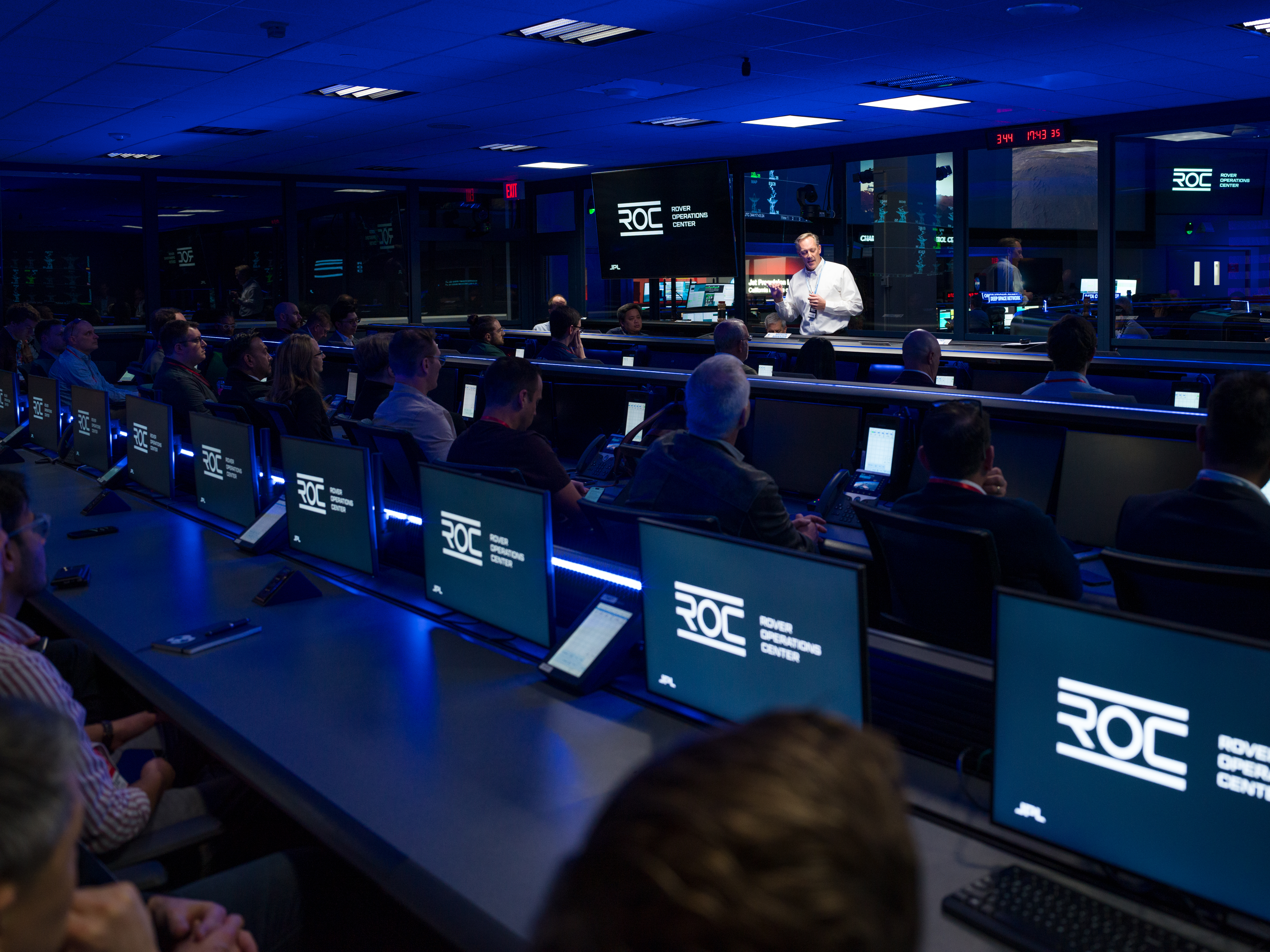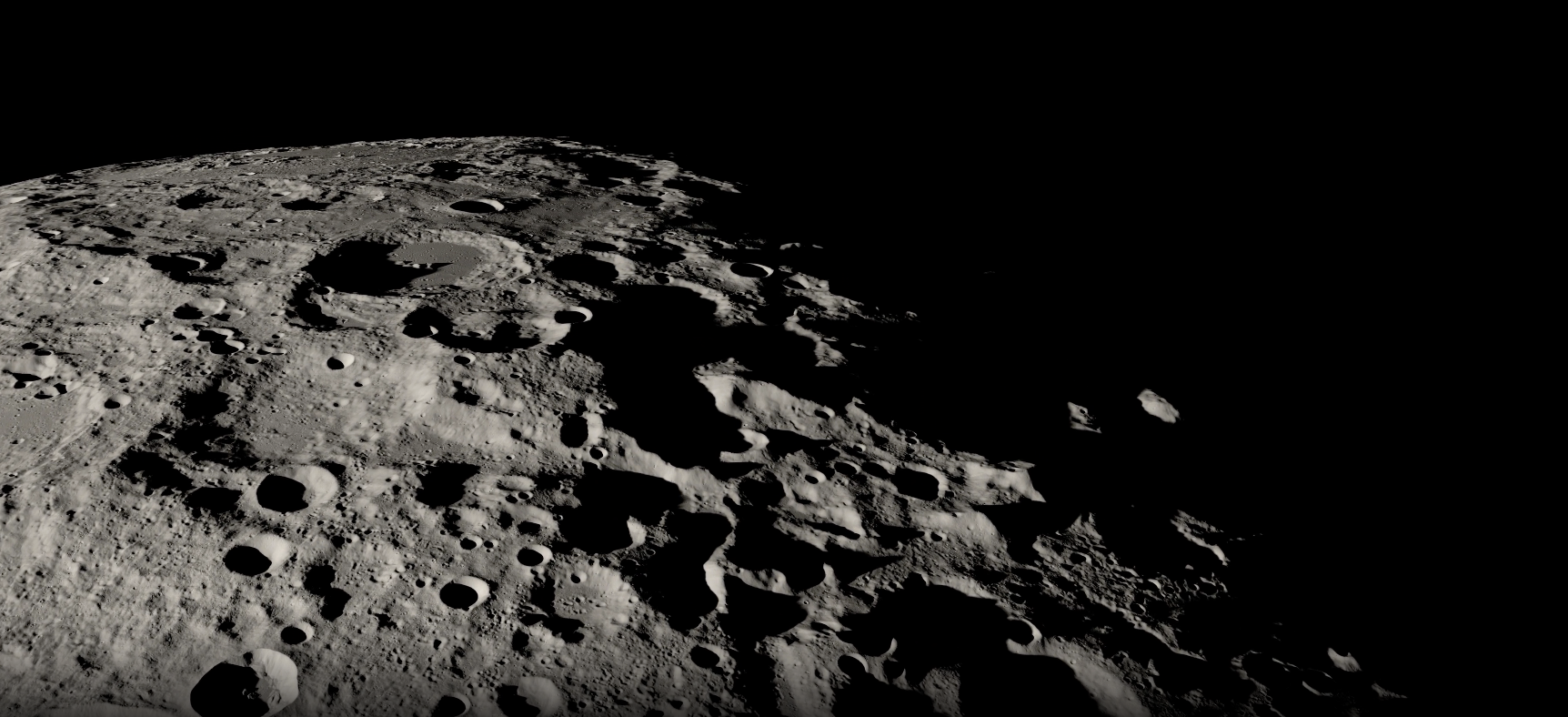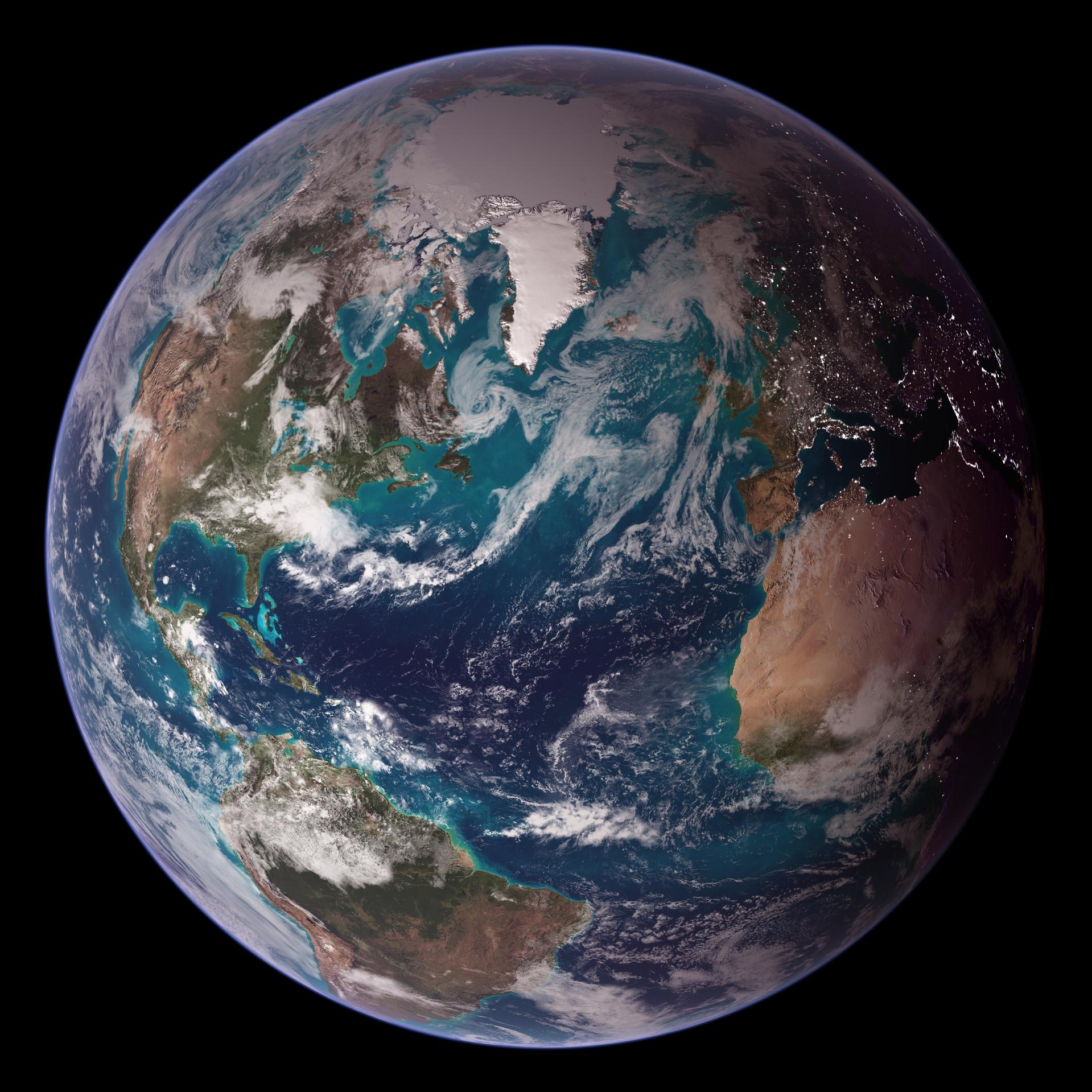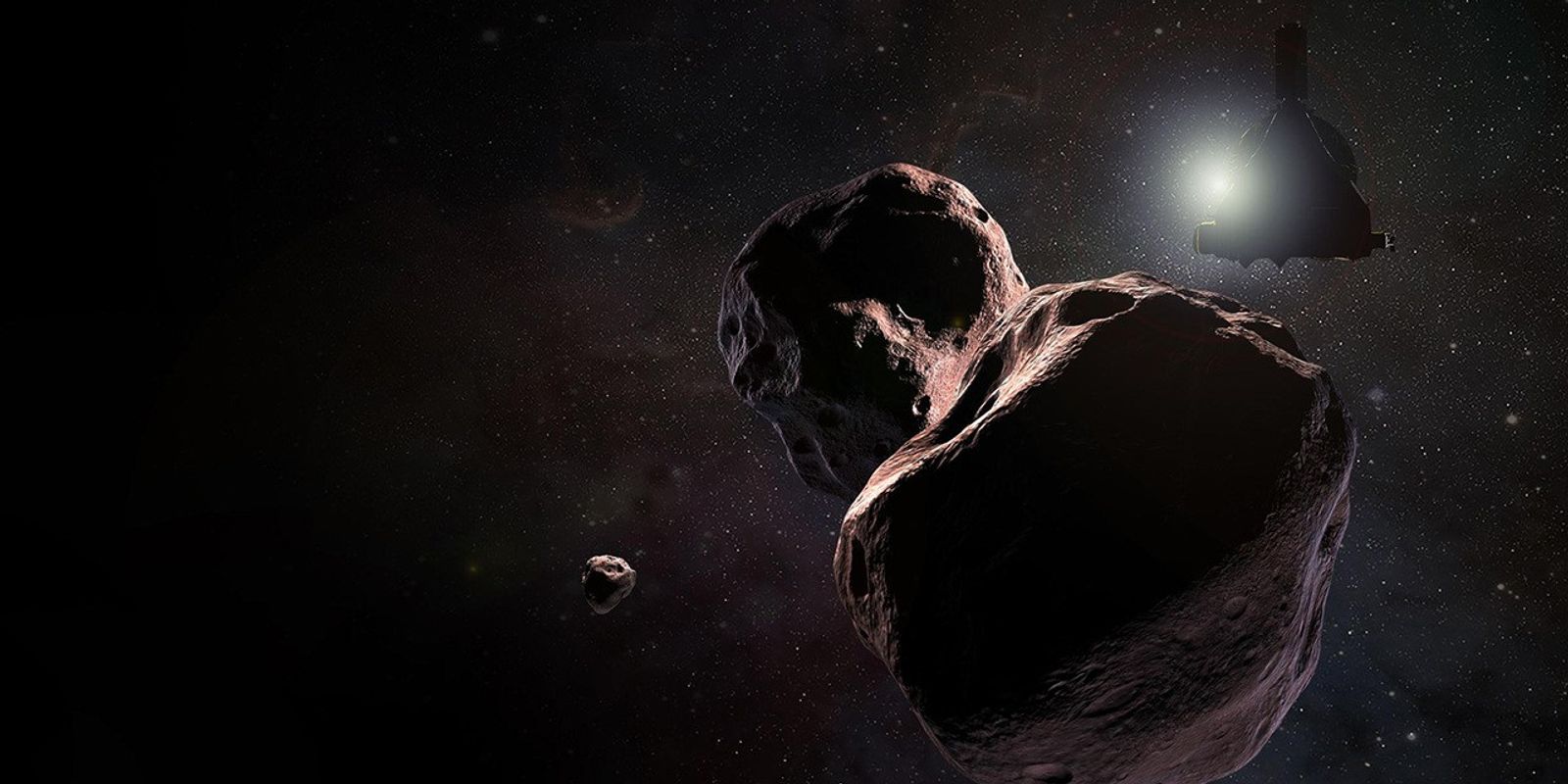NASA’s Lucy spacecraft launched aboard an Atlas V 401 rocket on Oct. 16, 2021, on a 12-year journey to Jupiter’s Trojan asteroids.
Called “Trojans” after characters from Greek mythology, most of Lucy’s target asteroids are left over from the formation of the solar system. These Trojans circle the Sun in two swarms: one that precedes and one that follows Jupiter in its orbit of the Sun. Lucy will be the first spacecraft to visit the Trojans, and the first to examine so many independent solar system targets, each in its own orbit of the Sun.
Studying Jupiter’s Trojan asteroids up close would help scientists hone their theories on how our solar system’s planets formed 4.5 billion years ago and why they ended up in their current configuration. “It’s almost like we’re traveling back in time,” said aerospace engineer Jacob Englander, who helped design Lucy’s trajectory while working at NASA’s Goddard Space Flight Center in Greenbelt, Maryland.
First conceived seven years ago as a mission to two asteroids, Lucy expanded to epic proportions thanks to creative engineering and impeccable timing. Some imagine that karma may have had something to do with it as well: “I often joke that I’ve spent my career worshipping at the feet of the gods of celestial mechanics,” said Lucy principal investigator Harold Levison, an expert in planetary dynamics based out of the Boulder, Colorado, branch of Southwest Research Institute (SwRI), which is headquartered in San Antonio. “Now they’re paying us back for that devotion.”
“I often joke that I’ve spent my career worshipping at the feet of the gods of celestial mechanics. Now they’re paying us back for that devotion.”- Harold Levison, Southwest Research Institute
The Trajectory
According to mission legend, the moment that changed everything was in 2014, a few years before NASA selected Lucy for flight. Longtime mission trajectory designer Brian Sutter from Lockheed Martin Space in Littleton, Colorado, was walking Levison through a computer simulation of Lucy’s proposed route through the solar system.
It appeared to Levison that Lucy would be passing Patroclus on its way to its official targets; Patroclus is one of a pair of Trojan asteroids that orbit each other. Unbeknownst to Sutter at the time, Patroclus is a favorite Trojan of Levison’s. Locked in a binary orbit with its near-twin partner Menoetius, it is a rare and mysterious breed inside the orbit of Neptune. Most asteroids that settled in the inner solar system should have been torn from their partners during the turbulent planet-formation period that was marked by massive collisions.
How did this pair stay intact? The answer could hold important clues to the timing and execution of planet formation, Levison said. “I don’t know why Brian chose to include Patroclus; maybe it was one of the big ones, maybe he liked the name,” he said. “But when I saw it, I remember shouting ‘Wait, wait: Can we go there?’”
Sutter has designed spacecraft trajectories for decades, including ones for NASA’s asteroid sample return mission OSIRIS-REx and NASA’s Mars Odyssey Orbiter, with spacecraft built by Lockheed Martin. He included Patroclus and Menoetius in Lucy’s trajectory simulation simply because they were in the celestial neighborhood; the pair wasn’t quite along Lucy’s path. But Sutter checked whether the solar system would be aligned in the future such that Lucy’s trajectory could bring it close enough to the pair to observe them.
As it happened, Lucy and the Patroclus-Menoetius pair crossed paths in 2033. “It was just luck,” Levison said.
This finding inspired Sutter to seek other targets along Lucy’s path during the mission timeframe. He fed 750,000 known asteroid orbits into a spreadsheet, plus Lucy’s trajectory at the time, and spent months running calculations that found a handful of additional asteroids — ones with diverse chemical compositions that were perfect science targets for the mission.
“I kept adding encounters in my simulation until we ran out of fuel on the spacecraft, and that’s where we ended Lucy’s trajectory,” Sutter said. “However, I also knew that there are more targets along the way, and we could get to them if we had a little more fuel.”
As he has always done, Sutter used Excel as one of his trajectory tools — a program most people associate with accounting — to design Lucy’s path through space. “I can do all kinds of magical things in it,” Sutter said. It would take Englander, who was working at NASA Goddard, to optimize the trajectory and get the spacecraft to eight targets ranging in diameter from about 2 miles (3 kilometers) to 70 miles (113 kilometers).
Now a mission designer at the Johns Hopkins Applied Physics Laboratory in Laurel, Maryland, Englander wasn’t involved with Lucy at the time that he read about it on a popular news site. He happened to be building a powerful software called Evolutionary Mission Trajectory Generator, or EMTG, now available as open-source software for anyone who wants to use it. EMTG could cycle through millions of trajectory scenarios in hours instead of months. “I had a feeling that it would be beneficial to Brian and the team if I were to give them a version of the trajectory rendered in EMTG, so I reverse engineered the mission based on the article,” Englander said.
The route Englander’s software identified reduced fuel use and the size of Lucy’s launch vehicle. As a result, it saved the mission money while taking it past more asteroids, securing Englander a position on the team, and setting Lucy up to get selected by NASA in 2017.
Now, Lucy is on its way to the Trojans. Its launch from Earth placed Lucy on a trajectory that will bring it past Earth twice — in 2022 and then 2024 — so the spacecraft can use this planet’s gravity to hurl itself toward the Trojans.
In 2025, Lucy will fly past Donaldjohanson, which orbits in the asteroid belt between Mars and Jupiter. The team will use this flyby to test the spacecraft’s instruments.
By August 2027, Lucy will reach its first swarm of Trojans that precede Jupiter at a gravitationally stable location known as a Lagrange point, specifically known as L4. There, the spacecraft will first intersect with Eurybates (pronounced "yoo-RIB-a-teez" or "you-ri-BAY-teez") and its satellite Queta ("KEH-tah").
By September 2027, Lucy will fly by Polymele ("pah-li-MEH-lee" or "pah-LIM-ah-lee"), and then in April 2028 by Leucus ("LYOO-kus" or "LOO-kus"), and Orus ("O-rus") in November 2028.
Lucy will then swing back past Earth for a third gravity assist, which will catapult it toward the swarm on the other side of Jupiter, located at the L5 Lagrange point, where it will meet up with Patroclus ("pa-TROH-klus") and Menoetius ("meno-EE-shus" or “meh-NEE-shus”) in 2033.
The Science
The Trojans are clusters of rock grains and exotic ices that didn’t coalesce into planets when the solar system formed. They’re among the best-preserved evidence we have left from that period and are thus key to explaining how the solar system came to look the way it does.
NASA's Goddard Space Flight Center
This video is public domain and can be downloaded from the Scientific Visualization Studio.
“When we look back on the solar system and our place here on Earth, people often ask, ‘What is our history? How did we get here?’” said Cathy Olkin, Lucy’s deputy principal investigator who’s based at Southwest Research Institute. “Lucy is going to try to help answer some of these questions.”
There are a handful of theories explaining how planets, moons, and other objects formed and ended up in their current locations. Levison, for instance, is a co-author of the Nice model, named after the city in France where it was developed in 2004. This computer simulation of the early solar system suggests that the giant, gaseous planets started out in a packed configuration around the Sun. Eventually, gravitational interactions with the disk of small bodies and with each other caused the growing planets to spread apart. Neptune, Uranus, and Saturn spread out farther away from the Sun, while Jupiter moved slightly closer in.
“In this theory, this reshuffling caused chaotic disruption,” said Olkin, a planetary scientist, “scattering many bodies out of the solar system and drawing some in and trapping them around the Lagrange points. That’s one possible explanation for how Jupiter’s Trojans came to be.”
Comparing the composition of the Jupiter Trojans will help scientists unravel their history. From Earth and space telescopes, Trojans look compositionally different from each other. Is that because each came from a different part of the solar system and was thus made of different stuff? Or are the Trojans made of the same stuff, with differences visible only on their surfaces, which may have been altered by different degrees of heating, radiation, and collisions the asteroids experienced while making their way to their current Lagrange positions.


























